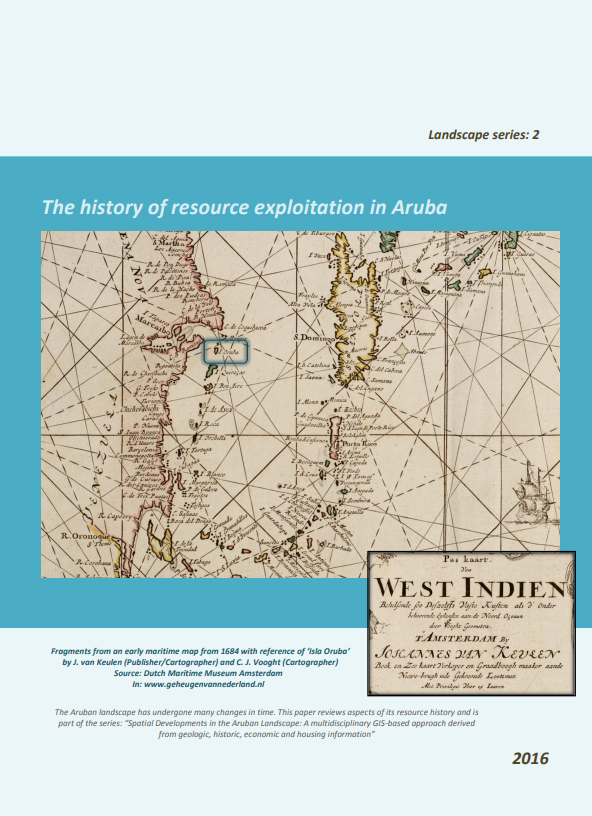The History of Resource Exploitation in Aruba
Submitted by Shassy Cahyani on Thu, 02/25/2021 - 10:08This paper is part of a series on the Aruban landscape. To bring perspective to current environmental threats and developments we review, in this paper, the history of resource utilization in Aruba. Good knowledge of present but also of past processes is vital to understanding the effects of urbanization and economic progress on land- and marine ecosystems.
The architectural, cultural and political history of Aruba is quite well documented. In the context of this paper, we like to recall some of the historic events that strongly relate to the utilization of local resources in the region and that indirectly had a lasting effect on the face of the landscape in Aruba. We review information from, amongst others, Hartog (1953), Versteeg and Ruiz (1995), Alofs and Dalhuisen (1997), Ridderstaat (2007) and Bakker and Klooster (2007) and follow a division into periods as used by the National Archaeological Museum Aruba (NAM, 1999).
Over time, the landscape and vegetation in Aruba changed due to fluctuations in geological and climatic conditions as well as due to the impact of human action. In Figure 1 (pp. 7) we present a schematic overview of the events in the Caribbean that help to understand the influences that Aruba faced during the colonial period and thereafter. We mention some exploitations of resources in the 19th century and onwards that had a substantial bearing on the landscape in more detail.

